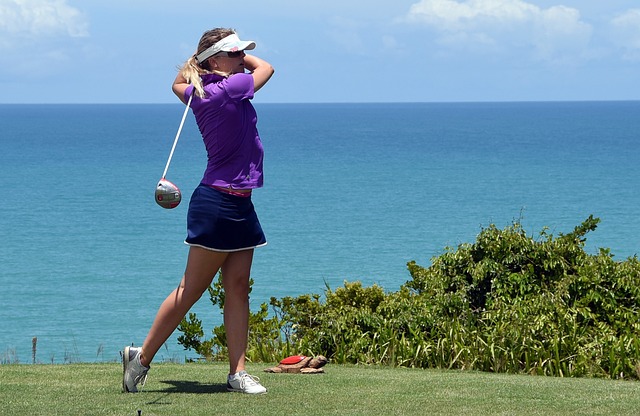If you love sports such as baseball and golf, it’s important to know that while these sports are an excellent way to get some fresh air, sunshine, and exercise, they also increase the likelihood of overuse injuries, such as those of the back or joints.
Fortunately, there are simple exercises you can do to strengthen your core and help prevent injury. Here, we explain more about overuse injuries and show you how to do some moves that can help keep you in the game!
 What Are Overuse Injuries?
What Are Overuse Injuries?
Overuse injuries can happen due to the repetitive motions required by sports and activities such as golf and baseball. These injuries are more common than acute injuries, which cause sudden pain and inflammation.
Unlike acute injuries, overuse injuries happen over time due to small-scale damage. For example, the pain tends to come on gradually rather than suddenly. You may not remember getting hurt or doing any specific motion that caused the pain.
If you have an overuse injury, you may have swelling at the site of the injury or have periods of pain or discomfort that take a long time to go away.
People prone to overuse injuries include those who:
- Use inaccurate swinging techniques
- Have an existing condition, such as flat feet or a limb length discrepancy
- Are older
You can use some of the anti-rotational exercises below to strengthen your core and lower your risk of an injury while golfing or playing baseball.
Planks
Planks are excellent exercises to improve core strength and reduce the risk of injury from many popular sports, including baseball and golf.
You can do several different types of planks, with front, side, and rolling planks being the most beneficial for golf and baseball players.
How to Do a Front Plank
To do a front plank, start on a comfortable floor. An exercise mat is best, as it will provide cushion for your feet, hands, and joints.
Place your hands with palms down on the floor. Next, extend your legs so your toes are touching the floor. Your toes and hands should be the only body parts in contact with the floor.
Keep your elbows under your shoulders with your arms straight out and face the floor. Pull your navel in, keep your abdominal muscles tight, and keep your body as straight as possible—no bending!
Hold the pose for 10 or more seconds, working up to a full minute as you are able.
How to Do a Side Plank
A side plank is a great exercise to help support your core, as it works the waist muscles that connect the ribs, hips, abdomen, and lower back—perfect for when you need to twist your core, as is done in baseball and golf.
To do a side plank, lay on your right or left side and keep your legs straight. Your feet should be on top of one another, and your elbow should be under your shoulder, supporting your body weight. Keep your core tight and lift your hips and torso off the mat so that your elbow and the side of your foot are supporting your weight.
Stay as straight as possible and hold the pose for 10-60 seconds. Perform this pose on both sides for best results.
How to Do a Rolling Plank
A rolling plank is one of the more complex planks you can do, so only perform this plank exercise if you are experienced in doing planks and have good core strength to begin with.
Rolling planks are a variation of the side plank, so you will do both your right and left side in one move. To start, get in a front plank pose, but instead of placing your palms flat on the floor and extending your arms, use your elbows to support your body, stacking your forearms underneath you for support. Remember to keep your core tight by pulling your navel in toward your spine for this exercise.
Then, roll onto your right or left side, keeping one forearm planted firmly on the ground to support you while you extend the other arm up over your body. Your feet can either be stacked on top of each other after you roll, or you can keep them staggered on the ground.
Hold the pose for 10 or more seconds, then roll again onto the opposite side and do the same thing.
Pallof Press with Band
If you have a resistance band, you can do what’s called the Pallof Press. This move is designed to help strengthen and stabilize the core, so it’s a great priming move to do before swinging in baseball or golf.
If you’re new to this exercise, starting with a low-resistance band is important to avoid injury. You will also need a stable post to tie the band to.
To perform this exercise, hold the end of the band not tied to the post in both hands at chest height. You will want to be far enough away from the post that you feel some tension in the band. Stand to the side of where the band is tied and keep your feet apart.
Push the resistance band out in front of you and away from the post. You should be able to fully extend your arms while you do this. Hold the pose for a couple seconds, keeping your core tight and your shoulders dropped, then bring it back. You can do a few rotations of this for each side, just make sure you do both sides to keep your core in balance!
Stay in the Game with Chiropractic Care
Chiropractic care is an excellent supplemental practice to regular exercise and warm-up routines that can help your joints stay flexible and prevent common injuries from sports such as golf and baseball. Ready to take your swing to the next level? Schedule a free 15-minute consultation with Dr. Ward today!

